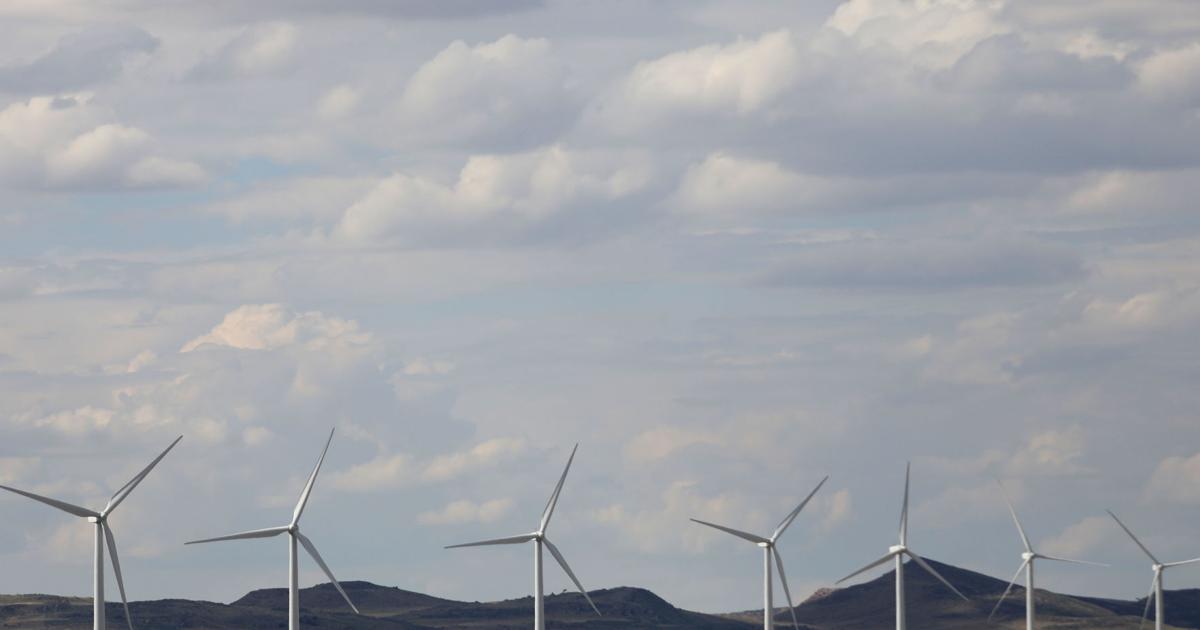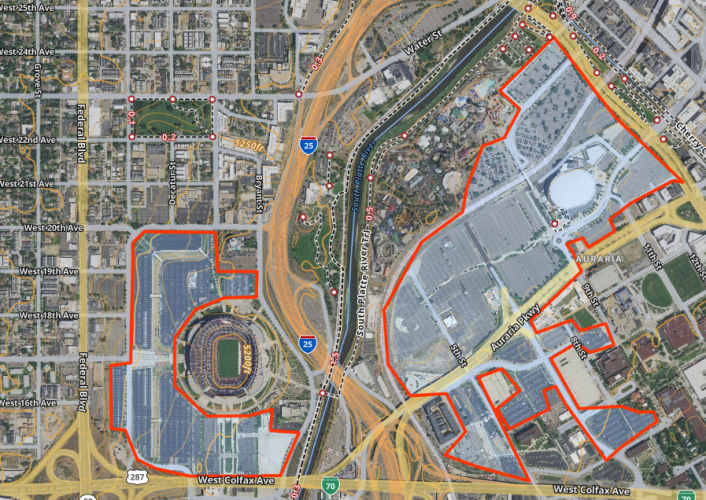Navigation
Install the app
How to install the app on iOS
Follow along with the video below to see how to install our site as a web app on your home screen.
Note: This feature may not be available in some browsers.
More options
You are using an out of date browser. It may not display this or other websites correctly.
You should upgrade or use an alternative browser.
You should upgrade or use an alternative browser.
U.S. says it will cut costs for clean energy projects on public lands
- Thread starter Wildabeest
- Start date
X13
Well-known member
- Joined
- Jul 13, 2017
- Messages
- 1,772
Can we just sacrifice Utah for the greater good of the rest of the nations public land? I'd bet Mike Lee will be on board
Potsie
Well-known member
Better yet, can we just sacrifice Mike Lee for the greater good of the nation's public land?Can we just sacrifice Utah for the greater good of the rest of the nations public land? I'd bet Mike Lee will be on board
KB_
Well-known member

Thorium, an alternative nuclear fuel
Kirk Sorensen shows us the liquid fuel thorium reactor -- a way to produce energy that is safer, cleaner and more efficient than current nuclear power.
This was an interesting listen. Hopefully something comes of this.
I don't think you can compare the development of a solar or wind farm to that of O&G. For example, that 120K or so number that @wllm threw out is roughly 8 Jonah Fields (or around 7-8 townships). That land could be developed forever, and while it does suck to have massive industrial developments on public land, if properly sited that spot could produce energy without consuming new land for generations - unlike oil, gas and coal that require constant growth to maintain supply while simultaneously making the planet worse for all of us.
So yeah, it sucks, but it's nothing compared to what we've already sacrificed for record profits of multi-national corporations who would rather sell oil overseas than here in the US, who prefer to buy stock back rather than actually sink money into new development or who instinctively seek a higher profit margin than a low one.
Then you add in climate and the associated issues with continuing to pour Co2, etc into the air and the severely negative effects of that (record breaking drought, massive wildfires, etc) and I have a hard time condemning this move in totality.
New developments are going to be based on the best return to the investors, not because dems or republicans decide where to put stuff.
I've yet to see an O&G facility actually conserve wildlife, despite their continued saying that they do. Sage grouse populations continue to trend downward, regardless of the milquetoast protections that get put in place, then rescinded when people think no-one is watching.
There is no corporate benevolence in the energy industry folks. They exist to make money for their shareholders regardless if they selling sunshine or black gold.
So yeah, it sucks, but it's nothing compared to what we've already sacrificed for record profits of multi-national corporations who would rather sell oil overseas than here in the US, who prefer to buy stock back rather than actually sink money into new development or who instinctively seek a higher profit margin than a low one.
Then you add in climate and the associated issues with continuing to pour Co2, etc into the air and the severely negative effects of that (record breaking drought, massive wildfires, etc) and I have a hard time condemning this move in totality.
New developments are going to be based on the best return to the investors, not because dems or republicans decide where to put stuff.
I've yet to see an O&G facility actually conserve wildlife, despite their continued saying that they do. Sage grouse populations continue to trend downward, regardless of the milquetoast protections that get put in place, then rescinded when people think no-one is watching.
There is no corporate benevolence in the energy industry folks. They exist to make money for their shareholders regardless if they selling sunshine or black gold.
D
Deleted member 18333
Guest
No free lunches when it comes to energy production

 www.kpvi.com
www.kpvi.com
This project will be the tie that binds more wind development in Wyoming.

 trib.com
trib.com

Report: Industrial solar disrupts big-game movements
A solar field in southwest Wyoming is interrupting critical big game movements and eating up habitat, according to a new paper co-authored by long-time Wyoming big game researcher Hall Sawyer.
This project will be the tie that binds more wind development in Wyoming.

Greenlit powerlines portend Wyoming wind energy boom
Now at more than 3,000 megawatts, wind accounts for nearly a third of the state’s total electrical generation capacity.
brocksw
Well-known member
fifyNo free lunches when it comes to humans existing on this planet
Wind Gypsy
Well-known member
- Joined
- Mar 12, 2017
- Messages
- 2,709
And then when that well is no longer producing we can PA it and reclaim it and you’d never even know it was there. That solar field is there for forever
Not really though. My experience with the stuff on public is they need to have a reclamation plan and be bonded to cover the costs.
Would it be a PITA to rip out thousands of steel beams driven 5 or 6' into the ground? Yeah, but not that difficult in the big scheme of things. In general what I've seen is the mandate to minimize grading on a lot of these projects. I understand they aren't all that way.
Last edited:
Not really though. My experience with the stuff on public is they need to have a reclamation plan and be bonded to cover the costs.
Would it be a PITA to rip thousands of steel beams driven 5 or 6' into the ground? Yeah, but not that difficult in the big scheme of things. In general what I've seen is the mandate to minimize grading a lot of these projects. I understand they aren't all that way.
I’d think they’d have to come along and remove the top soil after a solar farm and replace it with new. I believe they have to keep the ground sterilized so vegetation doesn’t grow. I could be wrong
There are over 80,000 orphaned wells in the US.Not really though. My experience with the stuff on public is they need to have a reclamation plan and be bonded to cover the costs.
Would it be a PITA to rip thousands of steel beams driven 5 or 6' into the ground? Yeah, but not that difficult in the big scheme of things. In general what I've seen is the mandate to minimize grading a lot of these projects. I understand they aren't all that way.
The industry drilled them, sought exemption from bonding, claiming that "self-bonding" would work well, sold it to state legislatures and regulators and then walked away from the mess they created.
So while industry "can" reclaim, they often times don't. They just declare bankrupty, put the profit in their pockets, and hand the bill to the taxpayer.
Wind Gypsy
Well-known member
- Joined
- Mar 12, 2017
- Messages
- 2,709
Ok, maybe this is a dumb idea, but I'm going to throw it out anyways.
Why put these solar arrays on public lands, when there is more than enough "acreage" on top of people's houses? Seriously. The space is already there, no new development needed; they're already hooked into the electrical grid, so no new development there; not harming any wildlife habitat that hasn't already been screwed up; pay the lease money to the homeowner for added economic benefit. I agree, we do need investment in green energy, we can only run off fossil fuels for so long, but why do we need new development? I mean hell, I have a huge southern exposure on the roof of my house. If they want to pay for the panels, and install, and pay me a lease fee... let's roll.
Not exactly a fleshed out plan, probably doesn't work in the end, but i think its a better idea than NEW development.
#1 - Cost. Would cost multiple times what it does to build utility scale in an open field due to economy of scale.
#2 - The existing distribution infrastructure is not designed to handle that additional generation.
If people wanted it bad enough those things could be addressed but it would be a very large undertaking and it would be very expensive.
Wind Gypsy
Well-known member
- Joined
- Mar 12, 2017
- Messages
- 2,709
I’d think they’d have to come along and remove the top soil after a solar farm and replace it with new. I believe they have to keep the ground sterilized so vegetation doesn’t grow. I could be wrong
To the contrary, there is typically a mandate for vegetative coverage but different locales and technologies could vary. I represented the owner during construction of a 4000 acre solar project on BLM in CA 8+ years ago. They actually mass graded everything smooth there but I know the projects built adjacent to it required maintaining vegetation and minimizing ground disturbance. Since then all of my projects have been on private but the conditional use permits have all required soil stabilization and vegetation is typically the mandated method.
#1 - Cost. Would cost multiple times what it does to build utility scale in an open field due to economy of scale.
#2 - The existing distribution infrastructure is not designed to handle that additional generation.
If people wanted it bad enough those things could be addressed but it would be a very large undertaking and it would be very expensive.
I'd prefer the expense to the current effort, really. We have more unseen costs relative to energy production now than if we made everyone be a part of the production solution.
There's also a great case to be made for micro-grids at a neighborhood/industrial park level where generation takes care of their needs - sort of like how Texas does it, but actually make tie it in to the national grid and it work for the consumer rather than the companies & lobbyists.
D
Deleted member 18333
Guest
On public land, they would strip and stockpile the topsoil. Then grade to whatever they want it to look like. When project is complete, they would need to regrade to a State approved post use topography, then replace the stockpiled topsoil and reveg. Some portion of reclamation bond is decreased at each step along the way. Final bond release is given after several years of proven plant density. More or less the process. Doesn't really matter what the development is.I’d think they’d have to come along and remove the top soil after a solar farm and replace it with new. I believe they have to keep the ground sterilized so vegetation doesn’t grow. I could be wrong
On public land, they would strip and stockpile the topsoil. Then grade to whatever they want it to look like. When project is complete, they would need to regrade to a State approved post use topography, then replace the stockpiled topsoil and reveg. Some portion of reclamation bond is decreased at each step along the way. Final bond release is given after several years of proven plant density. More or less the process. Doesn't really matter what the development is.
Mining tends to do this better than most other industries.
D
Deleted member 18333
Guest
Having all this equipment helps. The single biggest economic hurdle currently facing most western surface mining projects is the reclamation liability. The amounts are staggering.Mining tends to do this better than most other industries.
Having all this equipment helps. The single biggest economic hurdle currently facing most western surface mining projects is the reclamation liability. The amounts are staggering.
I'm ok with that.
Taxpayers pick up too much cost & debt from these kinds of developments anyway.
Wind Gypsy
Well-known member
- Joined
- Mar 12, 2017
- Messages
- 2,709
I'd prefer the expense to the current effort, really. We have more unseen costs relative to energy production now than if we made everyone be a part of the production solution.
There's also a great case to be made for micro-grids at a neighborhood/industrial park level where generation takes care of their needs - sort of like how Texas does it, but actually make tie it in to the national grid and it work for the consumer rather than the companies & lobbyists.
I agree. Definitely makes sense to plan it in that way with new developments.
The public isn't informed enough to push for it, the utilities aren't going to push to make themselves obsolete or devalue their existing infrastructure. The utilities also are going to purchase power from whoever can produce sell it cheapest. When public land makes the development cost lower, those are the projects that will be awarded the power purchase agreements. The companies will build what people will pay them to build but there has to be a market for it.
Edit to add: While you may be able to supply much of the load needed at an industrial park or neighborhood level with wind and solar, you're probably still going to need utility interconnect from gas/coal/nuke when it's not sunny and windy unless they are going to build a gas plant for that neighborhood or industrial park too. If you're going to rely on the big utility to have generation on reserve for when your microgrid cant hack it, there is a cost associated. xcel, midamerica, PG&E, etc isn't just going to build infrastructure and have generation standing by for free.
Last edited:
D
Deleted member 28227
Guest
@Ben Lamb
25 gigwatts = 183,000
NG Combined Cycle
1000MW, 33 acres (using Athen's station in Athens NY for area) *25 = 33 acres
7.40 cubic feet of gas used per/kWh (per eia)
1000MW = 8,760,000,000kwh a year (not how this math actually works, this isn't how name plate capacity works but whatever)
64,824,000,000 cubic feet of gas a year
1,944,720,000,000 cubic feet of gas in 30 years
How much does a well produce
4,041,418,780 cum first 36 months production for Haynesville well
3,284,514,310 cum first 36 months production for Marcellus well
To simplify the decline curve let's just say it's 0 after 3 years.
30 years =40,414,187,800 and 10 wells in the Haynesville
30 years = 32,845,143,100 and 10 wells in the Marcellus
Therefore you need 481 Haynesville wells to power a 1000MW for 30 years, and 592 Marcellus wells.
Let's say 2 well pads at 4acres (it's going to be way more than that, but let's say two to make up for SWDs/ pipelines/ ect.
962 acres +33 acre pad = 995
So 995acres for 1000MW for 30 years for a NG combined cycle plant + sourcing the gas.
If we use @MTGomer's 150MW for 1100 acres that means solar is 6.5X less efficient as far as surface use goes all in as Natural gas.
Now there is the global warming, sourcing solar pannels... yada yada yada.
Generally speaking though I think solar is a pretty myopic use of public lands given it's wildly inefficient use of space.
I'm not sure what a uranium mine + nuclear plant all in would require but I bet it's a fraction of OG.
It's possible my math is way off... but in my mind solar should be restricted to rooftops, roads, parking lots, etc in already developed urban areas.
Hell here's 200 acres of basically contiguous parking lot in the heart of Denver

or DIA... Denver owns 30,000 acres around the airport? I can't imagine the roar of landing planes 24/7 is great for critters... what about there?
25 gigwatts = 183,000
NG Combined Cycle
1000MW, 33 acres (using Athen's station in Athens NY for area) *25 = 33 acres
7.40 cubic feet of gas used per/kWh (per eia)
1000MW = 8,760,000,000kwh a year (not how this math actually works, this isn't how name plate capacity works but whatever)
64,824,000,000 cubic feet of gas a year
1,944,720,000,000 cubic feet of gas in 30 years
How much does a well produce
4,041,418,780 cum first 36 months production for Haynesville well
3,284,514,310 cum first 36 months production for Marcellus well
To simplify the decline curve let's just say it's 0 after 3 years.
30 years =40,414,187,800 and 10 wells in the Haynesville
30 years = 32,845,143,100 and 10 wells in the Marcellus
Therefore you need 481 Haynesville wells to power a 1000MW for 30 years, and 592 Marcellus wells.
Let's say 2 well pads at 4acres (it's going to be way more than that, but let's say two to make up for SWDs/ pipelines/ ect.
962 acres +33 acre pad = 995
So 995acres for 1000MW for 30 years for a NG combined cycle plant + sourcing the gas.
If we use @MTGomer's 150MW for 1100 acres that means solar is 6.5X less efficient as far as surface use goes all in as Natural gas.
Now there is the global warming, sourcing solar pannels... yada yada yada.
Generally speaking though I think solar is a pretty myopic use of public lands given it's wildly inefficient use of space.
I'm not sure what a uranium mine + nuclear plant all in would require but I bet it's a fraction of OG.
It's possible my math is way off... but in my mind solar should be restricted to rooftops, roads, parking lots, etc in already developed urban areas.
Hell here's 200 acres of basically contiguous parking lot in the heart of Denver

or DIA... Denver owns 30,000 acres around the airport? I can't imagine the roar of landing planes 24/7 is great for critters... what about there?
Irrelevant
Well-known member
@wllm

 www.ncbi.nlm.nih.gov
www.ncbi.nlm.nih.gov
"In the United States alone, pavements and other impervious surfaces cover more than 43,000 square miles—an area nearly the size of Ohio"

Paving Paradise: The Peril of Impervious Surfaces
"In the United States alone, pavements and other impervious surfaces cover more than 43,000 square miles—an area nearly the size of Ohio"
Similar threads
- Replies
- 2
- Views
- 339
- Replies
- 0
- Views
- 237
- Replies
- 199
- Views
- 13K
- Replies
- 16
- Views
- 2K
Latest posts
-
Matt Rinella knocking it outta the park
- Latest: Frequently Banned Troll
-
-
-




